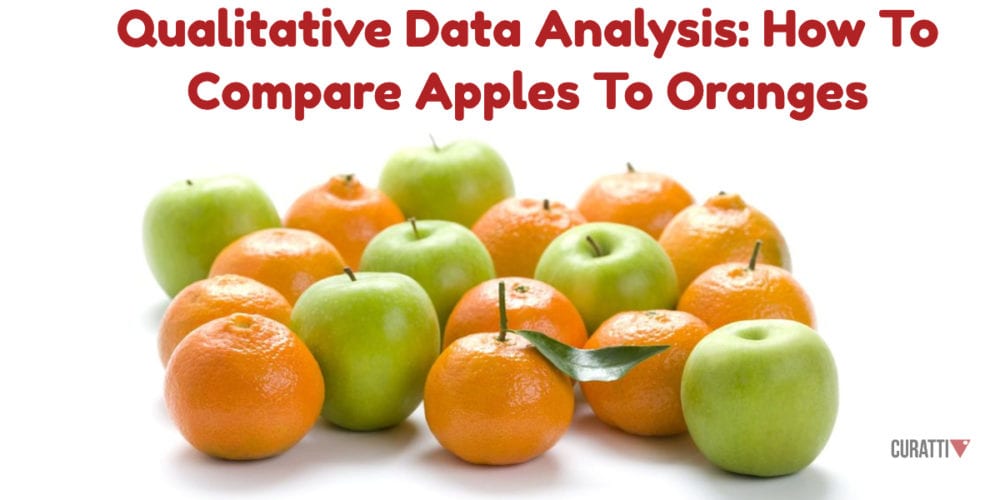How To Transform Customer Reviews Into Data That Actually Makes Sense

As a small business owner, online reviews, social media mentions, and responses to surveys are the best places to gather essential feedback from your customers. And that is all well and good until it comes time to figure out what to actually do with all of these responses.
The problem is that comparing open-ended feedback is like comparing apples to oranges. With widely-varying responses like “Enjoyed the upscale feel of the place but the food was just okay” and “Service was super fast and loved the appetizer selection,” how are businesses supposed to identify key areas to improve on? The answer is to take that qualitative data and turn it into numbers that can be more easily analyzed.
Overview Of Qualitative Data Tagging
First, let’s establish an overview of what this process looks like. Taking qualitative feedback like open-ended responses and reviews and transforming it into easily measured, numerical data, is what’s called “qualitative data coding.”
Please don’t be put off when you see the word “coding,” this doesn’t refer to computer programming, but rather the process of assigning different tags so that responses can be categorized.
Once you’re able to move customer responses into different categories and scales, you’ll be able to easily manipulate this data in programs like Excel or Google Sheets to get a clearer overall view of what your customers think. We break this process down below.
You may also want to read: The Winning Link Between Customer Service and Marketing
The 4 Basic Steps For Coding Qualitative Customer Reviews
Step 1: Decide On An Inductive Or Deductive Approach
If this is your first time analyzing customer feedback, you’ll probably want to take an inductive approach. Inductive coding just means that you don’t already have a set scale with which to measure responses. It involves going through the data and deciding on a scale as you go, since you’re not sure exactly what types of responses you’ll be measuring yet.
For subsequent rounds of analysis, you can use a deductive approach. This means that you will be using a predetermined scale to categorize the responses. So if you decide in your first round that a 1-5 scale measuring overall customer satisfaction is what will be most useful for you, you can continue to use this scale for the next round of feedback.
Step 2: Decide On Categories
For the next three steps, let’s assume that this is your first time coding qualitative data. So we’ll use an inductive approach. The next step is to decide on the broad categories you want to measure. If you’re a restaurant owner, these could look something like food quality, food price, and customer service. If you have all of your responses in a spreadsheet, you can create separate tabs for each category.
Step 3: Assign Sentiments
Once you have the data sorted into categories, you can assign a sentiment to each piece of data as well. Create a new column in your spreadsheet to add this piece. For example, the review “Very rude servers, we felt ignored the whole time we were there” would have a sentiment of “very negative.”
Step 4: Combine Your Categories And Sentiments
From here, you have everything you need to start digging into your data. Take time to sort everything into its correct tabs so you can have a clear picture. Each tab should be labeled with the category and the sentiment.
For example, “Food Quality + Positive, “Food Quality + Neutral,” “Food Quality + Negative,” etc. Then, you should be able to get a nice overview of areas of your business that your company is excelling in and needs to improve based on the number of responses in each tab.
Speed Up This Process Using AI
If this sounds like a long and laborious process, that’s because it is! There’s no doubt that manual analysis and coding of customer reviews will take significant employee bandwidth. This is why many businesses are starting to use tools that can do this process for you using AI technology.
Bots can be programmed to either use set categories and scales that you determine, or come up with their own tags. The AI can then quickly comb through qualitative customer data to give you a valuable quantitative breakdown. However, it’s still important for business owners to know exactly how this process works so you can understand where these numbers are coming from and how the bot transformed the qualitative feedback.
With these types of complicated topics, visualizations can be more helpful than just written explanations. Take a look at the graphic from Chattermill below to learn more about coding customer feedback:

 Heidi Thiel is a writer and content creator based in New York City. She specializes in creating guides for business owners that break down some of the most complex topics like sentiment analysis, text analytics, and survey data analysis. You can read more of her work on the Chattermill blog, and connect with Heidi on LinkedIn. You can also follow or tweet her @HeidiThiel
Heidi Thiel is a writer and content creator based in New York City. She specializes in creating guides for business owners that break down some of the most complex topics like sentiment analysis, text analytics, and survey data analysis. You can read more of her work on the Chattermill blog, and connect with Heidi on LinkedIn. You can also follow or tweet her @HeidiThiel
Sign Up For Our Mailing List
If you’d like to receive more in-depth articles, videos and Infographics in your inbox, please sign up below

Sign up for the newest articles from Curatti, delivered straight to your inbox
Featured image: Copyright: ‘https://www.123rf.com/profile_leeavison‘ / 123RF Stock Photo

CURATTI GUEST

